It’s Nice Back on Ice!
November 19, 2014
I’ve arrived back in Antarctica! It’s nice to see familiar faces at McMurdo Station, where I’ll spend the next week prepping and packing my gear for life out in the field. If you’re new to this blog, check out this video from last year (Season 3) to see what it’s like to fly to Antarctica. This blog article, ‘Scaling Giants’ describes the research I do in the field and why I’m here for the season. If you’re interested in reading more about life at McMurdo Station (the main base of operations for Antarctic science, located on Ross Island next to the Antarctic continent) check out my article about the Station here, or the short video tours of station here. I never spend very much time at the main station but since it’s where the vast majority of scientists work and live, a lot of people are curious about what it’s like there.
Despite the similar name, my field site in the ‘McMurdo Dry Valleys’ of the Transantarctic Mountain range is a completely different area from McMurdo Station and requires a helicopter to get out us out into the field across the sea ice from Ross Island to mainland Antarctica. The Dry Valleys are the largest ice-free area of Antarctica– approximately 97-98% of the continent is covered by the Antarctic Ice Sheet (which contains 70% of the planet’s fresh water as ice), while the Valleys consist of exposed earth and mountains mostly uncovered by ice, although there are plenty of glaciers between the mountains. The interesting thing about this area is that due to the ‘warmer’ temperatures that can rise above freezing during the austral summer months, seasonal rivers and streams are created by the glacial melt that run through the valleys and deposit meltwater into various lakes. Average temperatures in the Dry Valleys are approximately -20C (-5F) and the streams only flow when the weather is warm enough for glacial melt (0C or 32F), so from late November to the end of January (austral summer in Antarctica) when these temperatures are possible, water slowly melts out of the ice and I’ll be looking at the atmospheric contaminants that deposit into glacial melt here.
–
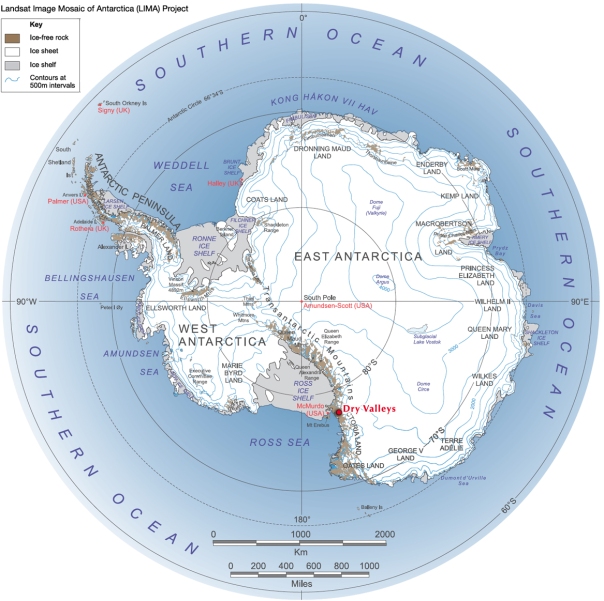
A map of Antarctica (courtesy of exploratorium.edu) marking the Dry Valleys withing the longer stretch of the Transantarctic Mountains that divide the West (left) and East (right) Antarctic Ice Sheets
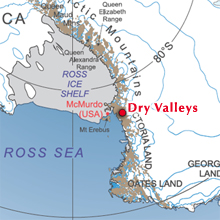
Even though this looks close to McMurdo base, it’s actually about a 45 minute helicopter ride away. McMurdo is on Ross Island, while the Dry Valleys are on the continent of Antarctica.–
–
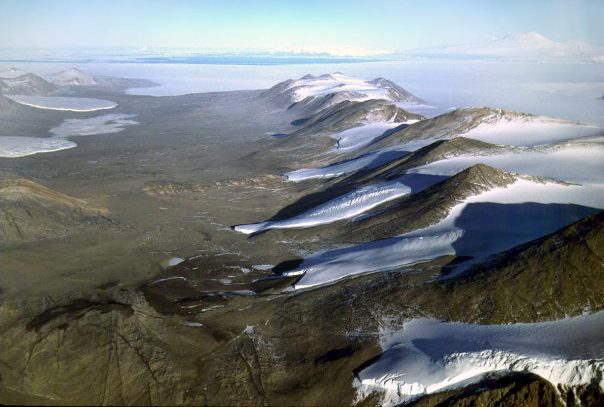
Glaciers pouring down into the Dry Valleys. Since this photo was taken from a helicopter it’s difficult to get a sense of scale, but most of these glaciers are more than forty feet thick at their downhill (thinnest) edge.
Since these mountains are farther away from the research stations, I’ll be living out of a tent at the base of Canada Glacier at a fieldsite called Lake Hoare, with 2-3 other people who will be working on other projects. I’ll arrive there next week but in the mean time I’m excited to spend Thanksgiving here at McMurdo Station, where there are currently 930 people living and working on base.
Posted on 2014, in (Current) Season 4: Life on Transantarctic Mountain Glaciers, 2014 (11/19) It's Nice Back on Ice!. Bookmark the permalink. 1 Comment.
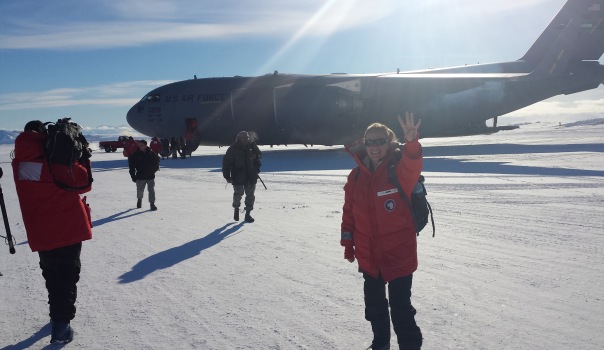
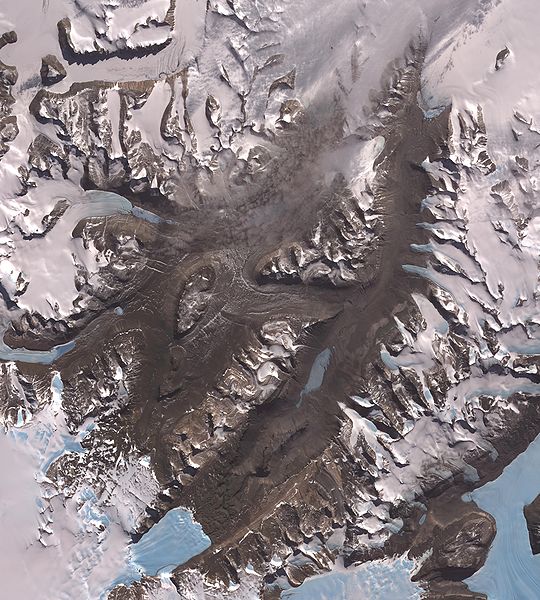
Enjoy your Thanksgiving in Antarctica, Alex!